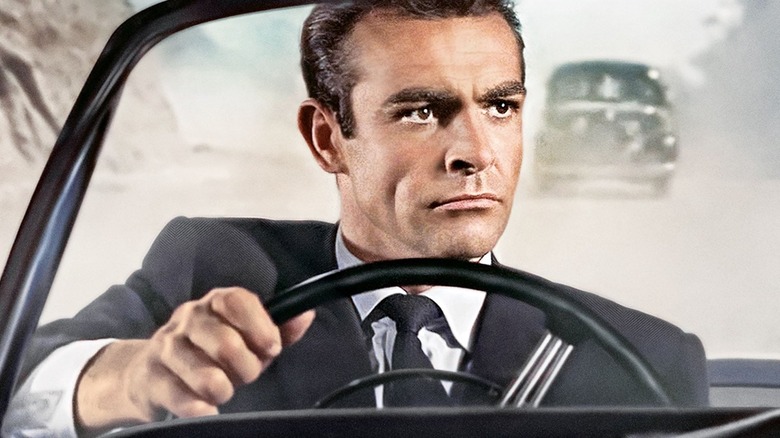
Corgi produced the first toy James Bond car, an Aston Martin DB5 complete with ejector seat and retractable machine guns, in October 1965. "Goldfinger" had premiered over a year prior. The paint job wasn't even accurate -- gold instead of silver, which made it look unfinished. As soon as it reached shelves, the diecast Aston became the first must-have Christmas toy.
Like his famously debonair creation, Ian Fleming cultivated a taste for the finer things in life. That extended to his garage, too; the author spent his $6,000 check for the "Casino Royale" film rights importing a raven black 1955 Ford Thunderbird. The world's greatest secret agent was a gearhead long before Hollywood came calling, with Bond showing off an already-antique 1930 Blower Bentley in the early novels. Today, just shy of 60 years after his first cinematic chase, Bond is inseparable from his keys. There is no 007 without an alternately souped-up or superpowered automobile within convenient getaway distance. To celebrate this most cinematic of cinematic traditions, here are James Bond's 15 finest cars.
BMW Z3
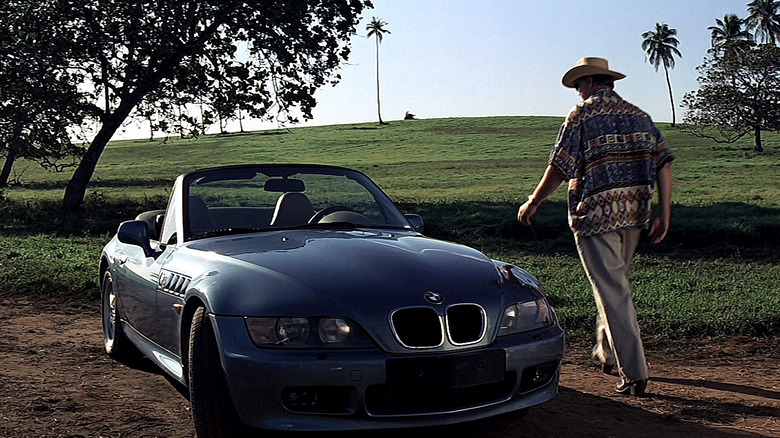
"GoldenEye" was a gamble in a franchise that, despite no shortage of casinos, wasn't known for rolling dice. The somber and violent "License to Kill," as far outside the lines as Bond ever colored, underperformed. A lawsuit over distribution rights delayed Timothy Dalton out of his contract. Since 1977, the films had been released biannually. Now, 007 would be six years out of commission and the Cold War had ended in his absence.
The film needed to re-establish the world's greatest secret agent as an icon of both past and present, timeless and fashionably to-the-minute. Though Pierce Brosnan drove the legendary Aston Martin DB5 first, it was the BMW Z3 that got the ad campaign. The civilian version of the vehicle did not come equipped with bulletproof bodywork, stinger missiles in the headlights, parachute brakes, or a self-destruct system, but the MI6 issue barely did, either. It was eye candy, with only one true gadget in its arsenal -- persuasion. Bond was back, brand new, and preferred BMW.
Sunbeam Alpine II
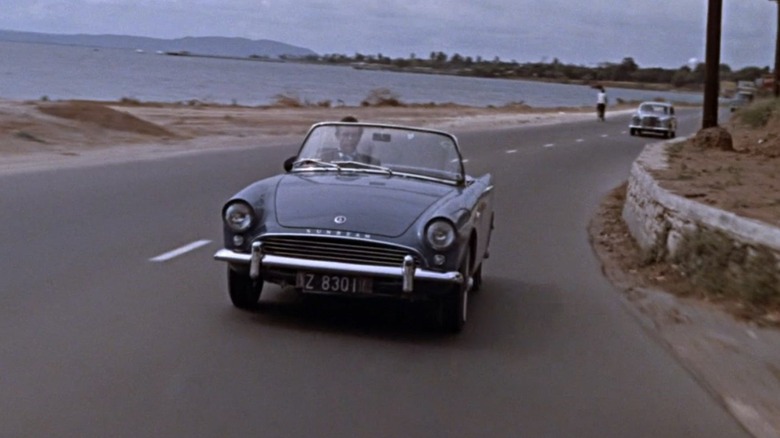
Before James Bond was a multi-billion dollar enterprise and the second longest-running franchise in film history, he was the poor man's gun-for-hire. United Artists greenlit "Dr. No" with a budget of $900,000 and only later pitched in an additional $100,000, less than $10 million in modern dollars. It was tight enough that producers had to settle for the sportiest car they could find on location in Jamaica -- the Sunbeam Alpine II.
Like the film surrounding it, the Alpine is a study in simple sophistication. It's boxy on the sides and pointy at both ends, a scrappier machine than its curvy progeny. The only trick up its sleeve is size; the Series II model was a full two-feet shorter than the Aston Martin DB5. Bond demonstrates by squeezing the car under a parked crane and forcing his pursuers off a cliff.
The Sunbeam Alpine II may be quaint in retrospect, but it made the mold. Bond was just as dangerous on the road as he was everywhere else. His one-liner at the end of the chase stands as an ice-cold threat to all challengers on the road: "I think they were on their way to a funeral."
Renault 11 TXE
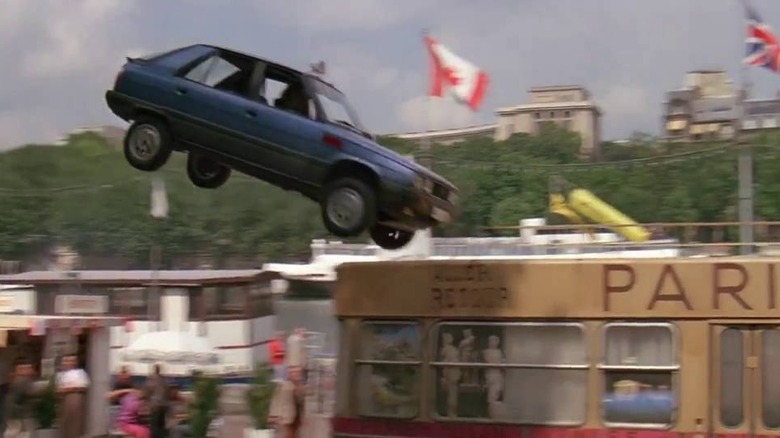
Bond cars may be synonymous with heavy artillery and ejector seats, but some of the series' finest have nothing more unique about them than the state-sanctioned assassin behind the wheel. When 007 hijacks a Parisian taxi, it's nothing special. By the end of the resulting race, as if by suave osmosis, it defies the very foundations of automotive engineering.
The Renault 11 TXE is one of the most pedestrian vehicles in the franchise to receive a full licensing push, complete with contests and commercials trying to spin its stout brawn as "Tough On The Streets." It marked the end of a record-breaking $5 million marketing deal with American Motors. Whatever the car's faults, it went out with a bang and bisection. After a risky jump onto a moving tour bus, the taxicab loses its roof, then its entire back end. Bond doesn't have to drive the front axle far, but he still manages without wrinkling his tuxedo.
Toyota 2000GT Roadster
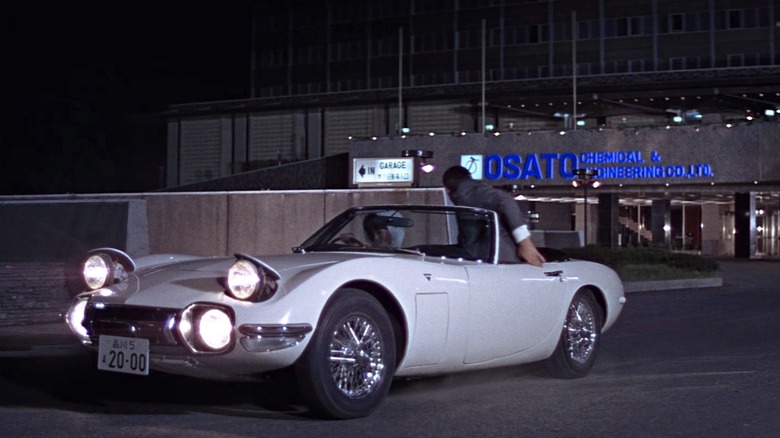
Bond's first trip to Japan provided a last-ditch opportunity for Toyota. In the years after World War II, the country's auto industry rebounded with small, sensible cars aimed at professionals in its fast-growing economy. Function was first, form a distant second. The Japanese manufacturers couldn't compete with European luxury and didn't -- not until the Toyota 2000GT.
When Bond co-producer Albert Broccoli spotted a prototype at the 1965 Tokyo Motor Show, he couldn't imagine a better set of wheels to shuttle around his pet spy. He was so taken and Toyota so invested that two custom Roadster versions of the 2000GT were commissioned for the production to accommodate Sean Connery's 6'5" frame. Even though 007 only rode shotgun, with the driving capably handled by his SIS counterpart Aki (Akiko Wakabayashi), and Toyota only sold 351 cars, the debut of Japan's first supercar was a cultural triumph.
The Toyota 2000GT changed the image of Japan's automotive industry on the grandest possible stage and still claims fans in high places to this day -- it's Daniel Craig's favorite Bond car.
Aston Martin DB10
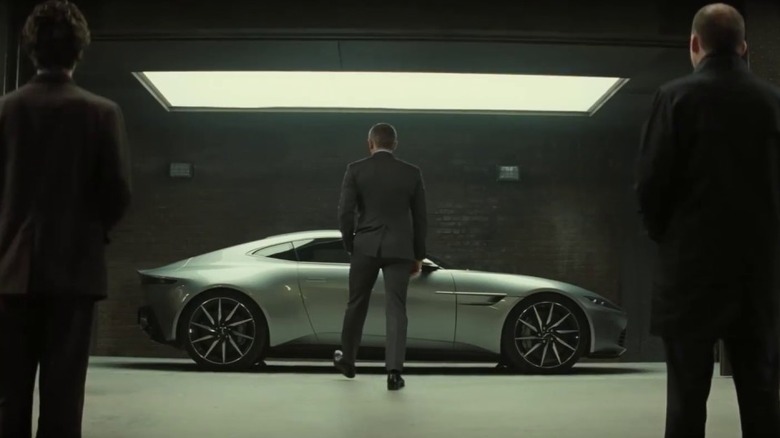
The Aston Martin DB10 was unveiled in December 2014, almost 50 years to the day James Bond first drove his DB5 in "Goldfinger." Director Sam Mendes announced it as "the first cast member" of 2015's "Spectre." It was more than just a car, more than just a debut, it was history -- for the first time ever, Aston Martin had built a car just for Bond.
Despite the number, the DB10 was not a follow-up to the company's celebrated DB9 model. The 10 meant quantity -- there would be 10 made for the production, and no more. The DB10 served as the platonic ideal of Astons, hinting at the commercially available updates to come while delivering the spy-fi luxury that most moviegoers assumed was unavailable to them anyway. It's all curve, nothing but black and silver, the Bond car in pure abstract and the perfect way to bring dashboard gadgetry into the Craig era. His Bond takes to it as well as expected -- with little respect and even less regard for the detailing.
Lotus Esprit Turbo
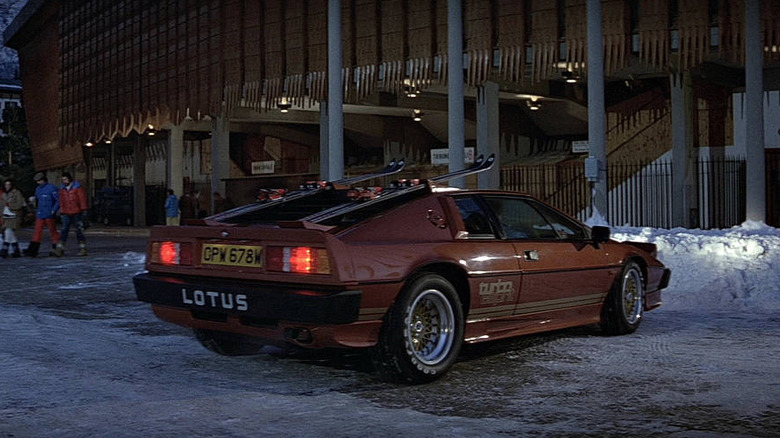
Roger Moore is the only Bond who never drove an Aston Martin. The brand's early absence was strategic, one more way to separate his performance from Connery's. Even after he found his footing, the Moore era never settled on a trademark carmaker. The closest candidate, with two appearances across seven films, is the Lotus. The manufacturer's debut inspired more toys than this modest victory lap, and justly so, but it's a testament to the Lotus Esprit Turbo that it barely needed gadgets -- or much screen time -- to leave a mark.
"For Your Eyes Only" was a grounded course correction after the comparatively gonzo "Moonraker," in which the closest thing to a Bond car was a hover-gondola. Lotus, who supplied the last genuine Bond car in "The Spy Who Loved Me," donated two Turbos to the cause. As in the earlier film, the Lotus was supposed to be stark white for the duration, but the snowy environs of Cortina d'Ampezzo, Italy, forced a repaint to increase its contrast. The compromise paid off -- the burning copper look presaged a decade of candy-colored sports cars that only wished Bond would take them on a ski trip.
Mercury Cougar XR7
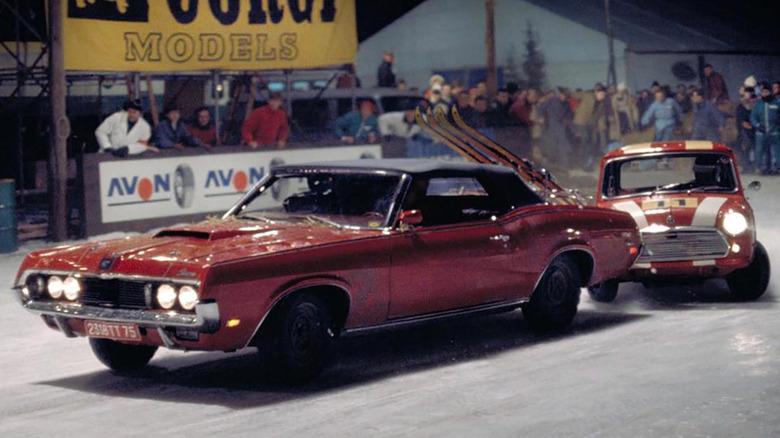
It stands to reason that the only woman who could make James Bond propose would have a cooler car than he does. That's no easy race in "On Her Majesty's Secret Service" -- newcomer George Lazenby makes his thankless entrance in a 1969 Aston Martin DBS. Diana Rigg beats it with all-American muscle.
The Mercury Cougar XR7 sticks out like a sore, Candy Apple Red thumb. It makes Blofeld's Mercedes-Benz fleet look antique and reduces a Mini Cooper rally to a fuel-injected pinball machine. This is a soft-top convertible stranded in the Swiss Alps with a 45-degree ski rack mounted to the trunk; on the most existential level, the Cougar is ludicrous.
Without a single gimmick under the hood, Contessa "Tracy" Di Vicenzo's daily driver has as just as much character as her fiancé's company car. Even more impressively, she's every bit the same artist with the clutch -- the film's biggest chase on four wheels belongs to her and the Cougar.
Citroen 2CV
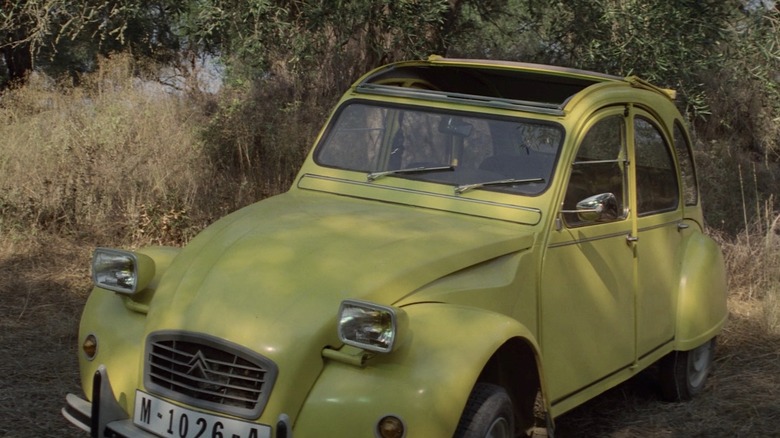
It's the anti-Bond car. No buttons on the dash. No champagne in the back. Slow enough to insult -- "I'm afraid we're being out-horsepowered" -- and plain enough to punish; it limps away looking like a crushed soda can. Famed stunt coordinator Rémy Julienne had to upgrade the engine just to make the 2CV look credibly competitive with the pursuing Peugeots.
And yet, it's all charm. The iconic profile seems tailor made for roly-poly accidents. Capsizing isn't a matter of if, but when and how ridiculous. Like the previously ranked Renault and a groundbreaking jump infamously scored by slide whistle, the Citroen belongs to a proud Moore tradition of automotive slapstick. Though the stunts are less spectacular and the destruction less silly, the car is the best ambassador of that spirit. Moore agreed -- it was his favorite Bond car.
Aston Martin Vanquish
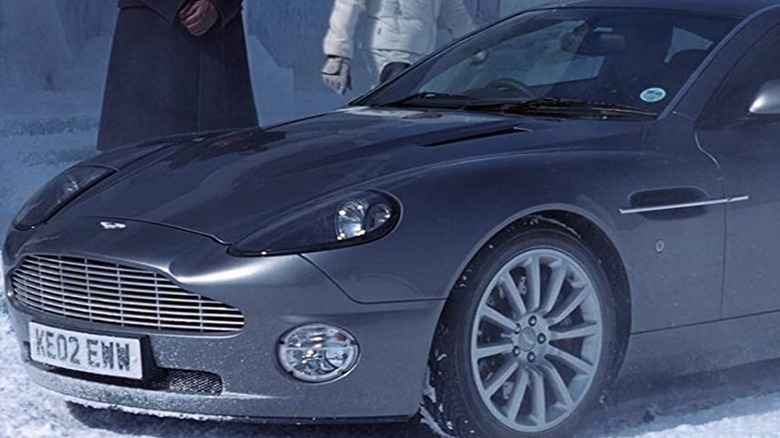
The 2002 release of "Die Another Day" marked the 40th anniversary of Bond on the big screen and his 20th mission in all those years. For this momentous birthday, 007 unwrapped a record $70 million worth of product placement from the world's most luxe labels. But the best present had no price tag.
The Ford Motor Company, owners of Aston Martin since 1987, provided seven brand new V12 Vanquishes at no cost. After three films saving the world in a BMW and keeping the DB5 polished for special occasions, Bond got back the keys to the car that made him a superspy. This time, it would make him arguably too super.
Not since the submersible Lotus Esprit in "The Spy Who Loved Me" has a Bond car been so miraculously overpowered. The Vanquish updated most of the legendary DB5's arsenal -- front-facing missiles in addition to the machine guns, spikes in the tires instead of the hubcaps -- and added the most controversial gadget in franchise history: For the first time ever, Bond's car could disappear. Whether or not that breaks the spy-fi reality or merely bends it beyond precedent, the reunion was warm -- "Die Another Day" was the highest-grossing Bond film yet and 007 has kept an Aston on the road ever since.
BMW 750iL
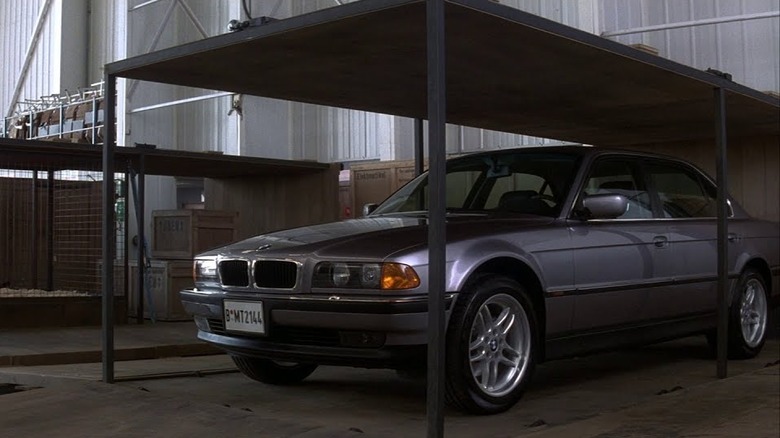
Once "GoldenEye" reintroduced James Bond to a post-Cold War world, the producers set about perfecting the post-Cold War assembly line. Product placement had been a necessary ingredient in the franchise ever since Bond proudly flew Pan Am in "Dr. No," but with globe-trotting spectacle costing more every year, endorsements became the horse that pulled the cart. With just eight brand partnerships, "Tomorrow Never Dies" recouped its $110 million budget.
Most visible among them, after a glorified cameo in "GoldenEye," was BMW. At first glance, the 750iL is a downgrade from the sporty Z3. It's a sensible, if pricey, four-door saloon car in accountant gray. Q (Desmond Llewelyn) hides it in plain sight as an AVIS rental and the disguise is seamless. But in motion, with the usual refinements, the 750iL makes off with the entire movie.
The parking garage chase is a four-minute masterclass in Bond action. Every toy in the box gets a turn -- the cellphone doubles as a high-def Game Boy, the caltrops scatter like overgrown jacks -- and Pierce Brosnan relishes all of them. Nameless henchmen, ignorant to the trickster god on whom they're wasting bullets, do more choreographed damage to themselves than their target. It only ends with a responsibly destructive punchline. Bond-as-gearhead in perfect miniature.
AMC Hornet
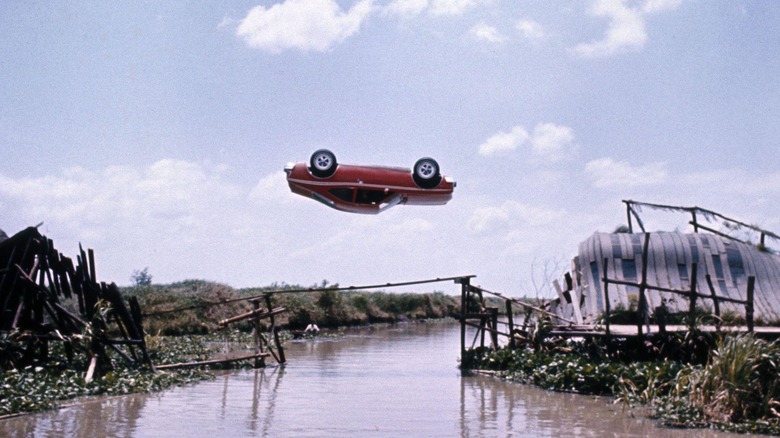
"Live and Let Die" establishes Roger Moore as a Bond without a car club. He can handle anything with an engine, cereal-box countermeasures be damned. "The Man With The Golden Gun" doubles down on his improvised prowess by showing audiences a vehicular stunt previously undocumented on film, pulled off by a showroom-fresh AMC Hornet.
American racer Jay Milligan first corkscrewed a car in 1972, courtesy of a ramp system devised by transportation engineer Raymond McHenry. They called it "The Astro Spiral Jump" and knew exactly which producers to sell it to. The Bond team not only bought the maneuver, but patented it so no errant action movies could beat them to the punch.
Completing a 270-spiral with a 2,888-pound AMC Hornet on location 30 miles outside Bangkok took extensive computer simulation, the first ever done for a vehicular stunt, and a slight remodel, with the steering wheel centered for weight distribution.
In front of eight rolling cameras, stunt driver Loren "Bumps" Willert hit the tilted ramp at the precisely calculated speed, 40 miles-per-hour, and landed safely on the other side. There was no second take. With or without the notorious slide whistle that underlines it in the finished film, "the Astro Spiral Jump" remains one of the most impressive stunts in the franchise and the AMC Hornet, one of the most underrated rides.
Ford Mustang Mach 1
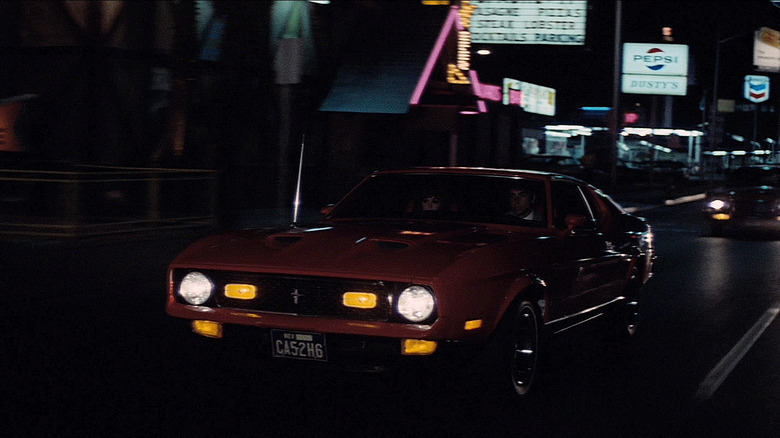
After Lazenby rejected a multi-film contract and a few American actors declined on the grounds of being American, the head of United Artists issued a Hail Mary decree: woo Connery at any cost. To many moviegoers, to the actor's frustration, he simply was James Bond.
On "Diamonds Are Forever," to mark 007's first extended stay in the States, that philosophy extended to the car -- the Ford Mustang simply was America. The lipstick-red Mach 1 didn't need any aftermarket firepower -- Tiffany Case (Jill St. John) rents it as-is from McCarran Airport. Against the scorched Nevada desert, it's a parody, a V8 pony set loose in a weird western. Under the constellation lights of Las Vegas, it's a dream.
Neon grazes it like tracer fire. The front-heavy frame gives the impression of perpetual pounce. The sheer, squealing speed makes everything else on Fremont Street look like a Model T. Can a real Mach 1 tip from two wheels to the other in the middle of a four-foot-wide alleyway? Of course not, but it's easy to believe it could land gently on the Vegas strip and peel out like nothing ever happened.
Aston Martin V8 Volante
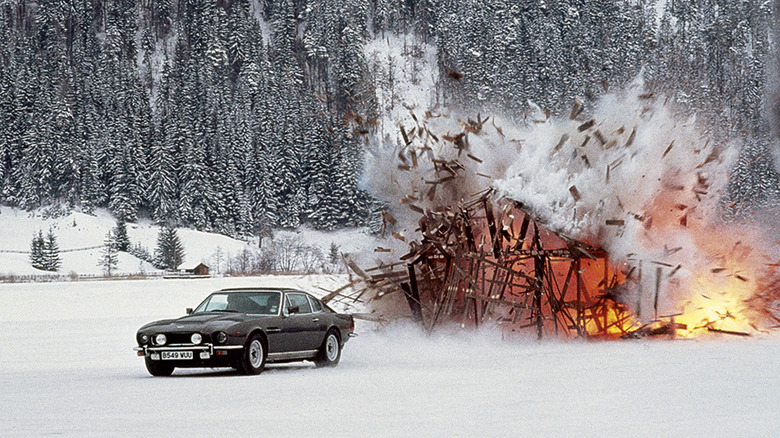
On "Live and Let Die," Roger Moore needed all the help he could get to prove that he was not Sean Connery. 12 years and seven films later, on "The Living Daylights," Timothy Dalton needed all the help he could get to prove that he was James Bond.
Aston Martin chairman Victor Gauntlett was so ready to oblige that he loaned his own pre-production Volante as collateral. For the first time since his ill-fated honeymoon in "On Her Majesty's Secret Service," Bond would drive an Aston.
The Volante is all cloak and dagger. From the road, it's old-fashioned elegance. Under the hood, it's pure muscle. The fold-out skis and chassis-level lasers are just icing on a cake that doesn't need any. Dalton was made for this model -- classy and direct, but always more dangerous than meets the eye. His legacy and the car's live on in "No Time To Die" -- Daniel Craig, Dalton's brooding heir apparent, will be taking the Volante V8 for a spin, minus the optional upgrades.
Lotus Esprit S1
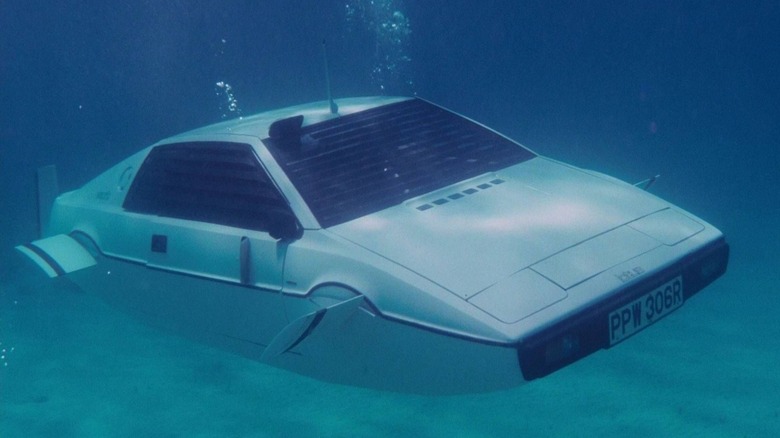
The Lotus Esprit S1 was destined for 007, only catching the right eyes with a flashy gamble. Upon receiving clandestine word that the Bond producers needed a car that could pass for a submarine, Lotus PR chief Don McLauchlan drove straight to Pinewood Studios. Not for a meeting -- the tip-off was pure espionage -- but a show. He parked a prototype Esprit right next to the production offices and waited. All it took was one day of exposure to get the call.
The new Bond had found his new car and it was everything an Aston Martin wasn't. Angular instead of curvaceous. Sharp instead of smooth. Hip instead of classic. The Esprit S1 looked like it had driven straight out of the Atari age and cracked the sound barrier on the way. And that's on dry land.
Nicknamed "Wet Nellie" in honor of pocket copter "Little Nellie" from "You Only Live Twice," the Esprit took to the water like, well, a car to water. A fully operational submarine version was built within a Lotus frame. It wasn't even airtight - the pilot wore scuba gear and escaping oxygen was faked with Alka-Seltzer. On film, of course, the transition is seamless and the effect is legendary. There hasn't been a better mix of suave and superpowered since, on wheels or otherwise.
Aston Martin DB5
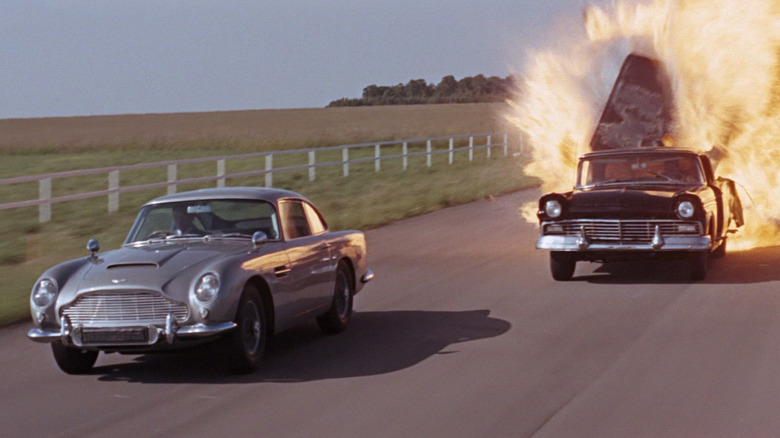
Sotheby's deemed it "The Most Famous Car in the World." To say anything more about the Aston Martin DB5 feels like a helpless understatement. It regularly tops rankings among movie cars. If it comes in second, it's always to the Batmobile, and the DB5 boasts one gadget that co-crimefighter can only dream about -- street legality (well, more or less).
In the novel, Bond signs out a DB III. By the time producers got around to "Goldfinger" in 1964, Aston offered a shinier option. The picture car would be the original DB5 prototype in "Silver Birch." Dollar for dollar, country for country, it was one of the savviest licensing deals ever struck.
With the release of "No Time To Die," the DB5 model will have starred in more Bond films than any Bond actor, a grand total of eight. The wider Aston fleet has appeared in 14 of 25. It doesn't matter what else 007 drifts, jumps, or self-destructs. Almost six decades after the debut of his first and most famous Swiss Army car, James Bond means Aston Martin and Aston Martin means James Bond.
Read this next: The 20 Greatest James Bond Villains Ever
The post The 15 best James Bond cars ranked appeared first on /Film.
from /Film https://ift.tt/2XV7z2z
via IFTTT
Comments
Post a Comment